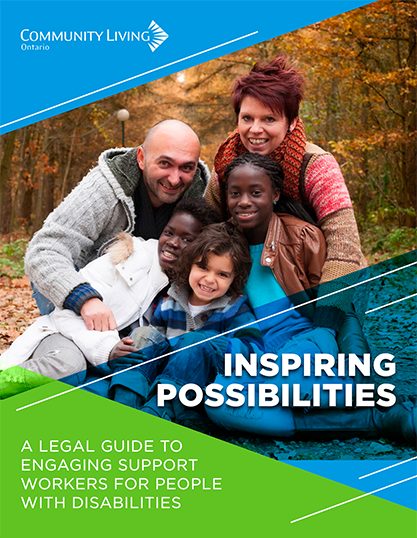On March 19, 2020, the Ministry of Health & Long-Term Care (MOHLTC) released new COVID-19 guidance for Long-Term Care Homes.[1] This article reviews some of the key recommendations that are relevant to residential group homes and similar facilities in the Developmental Services (DS) Sector.
Both DS Sector residential group homes and long-term care homes serve vulnerable persons in a setting that may be conducive to transmission of respiratory infections like COVID-19. These precautions will help reduce or mitigate the risk.
At present, the MOHLTC is recommending:
- Active screening of all new and returning residents, employees, students, and volunteers. This should occur at the facility’s entrance 24/7, particularly during business hours and shift changes. The Ministry has provided a screening checklist.[2] If an incoming resident has symptoms or has been exposed to COVID-19, the employer must consult with local public health.
- Passive screening should occur by placing signs in the facility reminding persons with symptoms to report it and reminding people to follow hand hygiene and respiratory etiquette.
- Only essential visitors should be permitted to enter the facility and only after active screening. Essential visitors are those visiting a resident who is very ill or requires end of life care. Those who fail screening should be denied entry and told to return after 14 days since last exposure if they develop no symptoms.
- All employees, students, and volunteers must self-monitor and report symptoms. The employer should inform employees of what symptoms look like. Those who are required to self-isolate or who are ill with an acute respiratory infection must not come to work and must report this.
- Care to residents should be provided using the Updated IPAC Recommendations for use of Personal Protective Equipment for Care of Individuals with Suspect or Confirmed COVID-19.[3]
- If residents develop symptoms, they should be required to wear a surgical mask and placed in a single room until further assessment. The facility should then initiate Droplet and Contact Precautions. A brief summary of precautions is provided in the MOHLTC guidance in footnote 1. Note, administrative areas that do not involve contact with residents with possible COVID-19 do not need to use personal protective equipment.
- Severely ill residents should be transferred to hospital by ambulance with notification to and cooperation with the hospital, local public health, paramedic services, and the resident.
- The employer must report to the local public health unit under the Health Protection and Promotion Act if a resident, employee, volunteer, or visitor has or may have COVID-19.
- An employee’s return to work after illness should be determined in consultation with their healthcare provider and local public health, with a report to Occupational Health and Safety prior to the return to work.
- Contact surfaces within 2 meters of someone who has been screened as positive for COVID 19 should be disinfected per Public Health Ontario’s Routine Practices and Additional Precautions.[4]
These recommendations are best practices and do require some nuanced application for the DS sector.
We recommend speaking with experienced labour and employment counsel when it comes to interpreting legal obligations, particularly in relation to work refusals in the DS Sector.
[1]http://www.health.gov.on.ca/en/pro/programs/publichealth/coronavirus/docs/2019_long_term_care_guidance.pdf
[2] http://www.health.gov.on.ca/en/pro/programs/publichealth/coronavirus/docs/2019_screening_guidance.pdf
[3] https://www.publichealthontario.ca/-/media/documents/ncov/updated-ipac-measures-covid-19.pdf?la=en
[4] https://www.publichealthontario.ca/en/health-topics/infection-prevention-control/routine-practices-additional-precautions
Note: This article provides general information only and does not constitute, and should not be relied upon as, legal advice or opinion. PooranLaw Professional Corporation holds the copyright to this article and the article and its contents may not be copied or reproduced in any form, in whole or in part, without the express permission of PooranLaw Professional Corporation.







